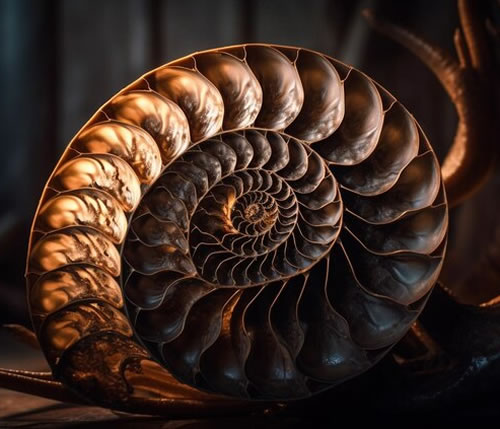One of the most fascinating aspects of mathematics is a phenomenon known as the Golden Ratio. The Golden Ratio shows us just how seamlessly math integrates into the world around us, from nature to art and architecture. This mathematical masterpiece continues to leave a mark on our world, so let’s find out what it’s all about.
What is the Golden Ratio?
The Golden Ratio, often denoted by the Greek letter φ (phi), is an irrational number approximately equal to 1.6180339887. This ratio comes from the Fibonacci sequence, a series of numbers in which each number is equal to the sum of the two preceding numbers in the sequence (0, 1, 1, 2, 3, 5, 8, 13, 21, and so on). As you continue progressing through the Fibonacci sequence, the ratio of consecutive numbers converges to the Golden Ratio.
The Golden Ratio has a unique property: the ratio of the whole to the larger part is the same as the ratio of the larger part to the smaller part. We can express this mathematically as (a + b)/a = a/b = φ, where ‘a’ is the larger part, ‘b’ is the smaller part, and φ is the Golden Ratio.

Visualizing the Golden Ratio makes it a lot easier to comprehend.
Art & Aesthetics
For centuries, the Golden Ratio has fascinated and inspired artists due to its unique aesthetic appeal. Artists use the Golden Ratio to create artwork that is visually harmonious and pleasing to the human eye. Perhaps the most famous example of this application comes from Leonardo da Vinci’s “Vitruvian Man.”

This iconic drawing depicts a man within both a square and a circle. The “Vitruvian Man” perfectly and beautifully illustrates the proportionality and balance of the Golden Ratio.
As well as this famous example, we can see the Golden Ratio in the dimensions of some of the most famous artworks and buildings in the world. Michelangelo’s “Creation of Adam” on the ceiling of the Sistine Chapel incorporates the Golden Ratio into its design. The sense of balance that the Golden Ratio creates in such pieces of art and architectural wonder tends to resonate with humans on a subconscious level.
Perfect Architectural Proportions
Speaking of architecture, some of the most famous and prominent buildings throughout history have incorporated the Golden Ratio into their structural designs, through perfect architectural proportions.
The Parthenon, perhaps the most famous and recognizable example of ancient Greek architecture, is often identified as a masterpiece of the Golden Ratio. From the dimensions of the columns to the placement of the friezes, and even the overall layout of the temple all abide by the Golden Ratio.
The Golden Ratio in Nature
If you’re not interested in art or architecture, you may be thinking that this Golden Ratio isn’t that interesting. However, we have not yet discussed the most intriguing aspect of the Golden Ratio – its occurrence in nature. Believe it or not, the Golden Ratio can be seen across nature, from the leaves on a stem and petals on a flower to the spirals of a pinecone, nature seems to follow the blueprint laid out by the Golden Ratio.

If we look at the shell of the nautilus – a tiny sea creature whose shell is often described as a symbol of beauty and perfection – we see that the spirals are almost identical to the Golden Ratio. As this shell grows, each new chamber maintains the same proportions, echoing the mathematical harmony of the Golden Ratio.
At Online Math Center
The next time you find yourself captivated by a beautiful building, or you’re admiring the beauty and consistency of trees, leaves, and other plants, just remember that all of this beauty stems from a fascinating mathematical concept known as the Golden Ratio.
At OMC, we pride ourselves on introducing our students to some of the most fascinating aspects of mathematics to help our students go beyond learning and spark a genuine interest and curiosity in mathematics. We offer a wide range of online math tutoring classes, from individually tailored one-to-one lessons to specific prep courses for important math competitions and the Math SAT.
Contact OMC today and introduce your child to the wonderful world of mathematics that they may never meet if their learning stops in the school classroom.